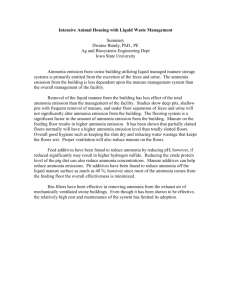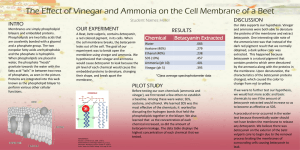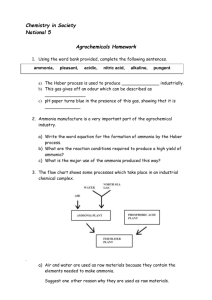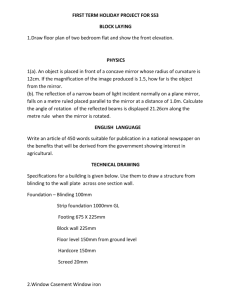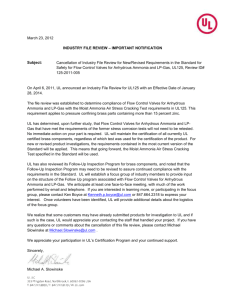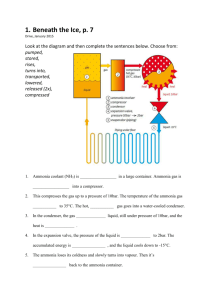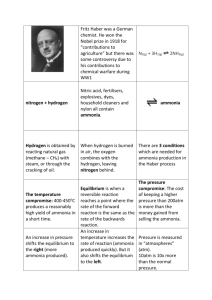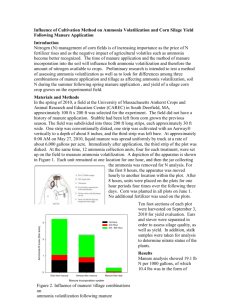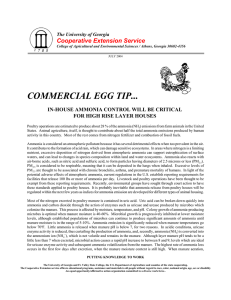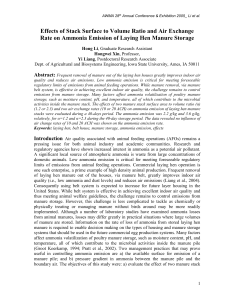Abstract NYM13
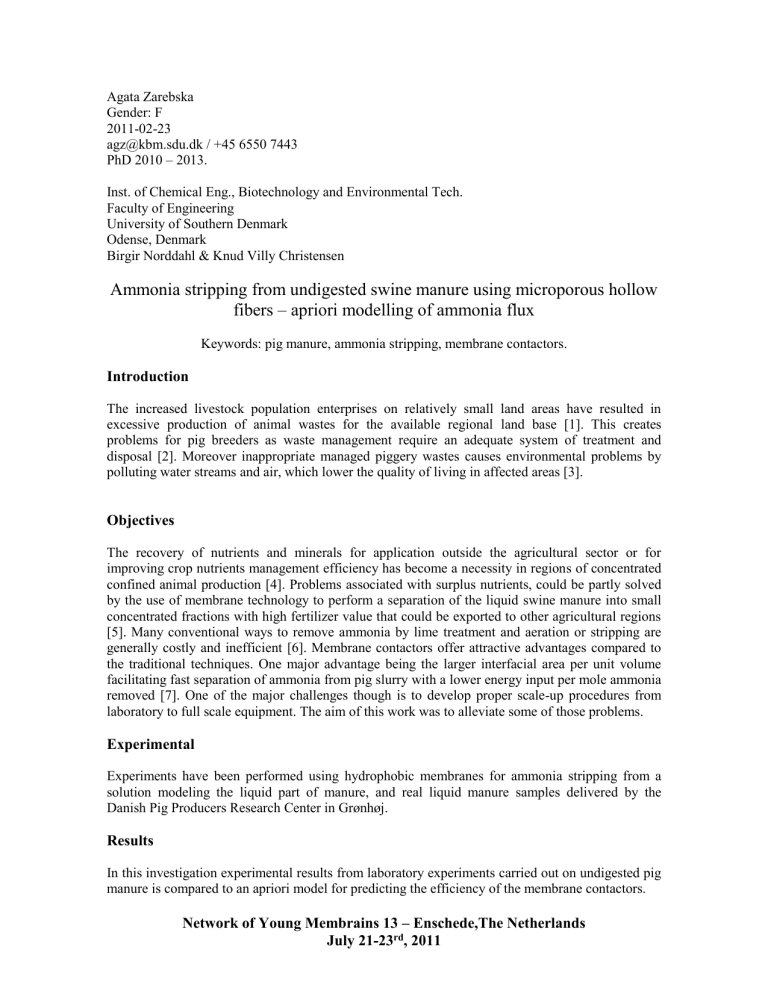
Agata Zarebska
Gender: F
2011-02-23 agz@kbm.sdu.dk / +45 6550 7443
PhD 2010 – 2013.
Inst. of Chemical Eng., Biotechnology and Environmental Tech.
Faculty of Engineering
University of Southern Denmark
Odense, Denmark
Birgir Norddahl & Knud Villy Christensen
Ammonia stripping from undigested swine manure using microporous hollow fibers – apriori modelling of ammonia flux
Keywords: pig manure, ammonia stripping, membrane contactors.
Introduction
The increased livestock population enterprises on relatively small land areas have resulted in excessive production of animal wastes for the available regional land base [1]. This creates problems for pig breeders as waste management require an adequate system of treatment and disposal [2]. Moreover inappropriate managed piggery wastes causes environmental problems by polluting water streams and air, which lower the quality of living in affected areas [3].
Objectives
The recovery of nutrients and minerals for application outside the agricultural sector or for improving crop nutrients management efficiency has become a necessity in regions of concentrated confined animal production [4]. Problems associated with surplus nutrients, could be partly solved by the use of membrane technology to perform a separation of the liquid swine manure into small concentrated fractions with high fertilizer value that could be exported to other agricultural regions
[5]. Many conventional ways to remove ammonia by lime treatment and aeration or stripping are generally costly and inefficient [6]. Membrane contactors offer attractive advantages compared to the traditional techniques. One major advantage being the larger interfacial area per unit volume facilitating fast separation of ammonia from pig slurry with a lower energy input per mole ammonia removed [7]. One of the major challenges though is to develop proper scale-up procedures from laboratory to full scale equipment. The aim of this work was to alleviate some of those problems.
Experimental
Experiments have been performed using hydrophobic membranes for ammonia stripping from a solution modeling the liquid part of manure, and real liquid manure samples delivered by the
Danish Pig Producers Research Center in Grønhøj.
Results
In this investigation experimental results from laboratory experiments carried out on undigested pig manure is compared to an apriori model for predicting the efficiency of the membrane contactors.
Network of Young Membrains 13 – Enschede,The Netherlands
July 21-23
rd
, 2011
Conclusions
Based on the experimental work it can be concluded that a simple model cannot predict the experimental results. It’s mainly due to insufficient thermodynamic data and the presence of as yet poorly understood fouling phenomena. In a future work the focus will be on determination activity coefficient, ammonia vapour pressure, Henry’s law constants for ammonia, diffusivities for ammonia and ammonium in slurry and developing a deeper insight into the fouling of membranes by pig manure. Transport models including counter diffusion and flow modeling in the module is also necessary.
References
[1] F. Abouelenien, Y. Kitamura, N. Nishio, Y. Nakashimada, (2009), Dry anaerobic ammonia– methane production from chicken manure, Appl Microbiol Biotechnol, (82), 757–764
[2] F. Abouelenien, W. Fujiwara, Y. Namba, M. Kosseva, N. Nishio, Y. Nakashimada, (2010),
Improved methane fermentation of chicken manure via ammonia removal by biogas recycle,
Bioresource Technol., (101), 6368–6373
[3] Z. Milan, E. Sanchez, P. Weiland, R. Borja, A. Martin, K. Ilangovan, (2001), Influence of different natural zeolite concentrations on the anaerobic digestion of piggery waste, Bioresource
Technol., (80), 37-43
[4] A. Bonmati, X. Flotats, (2003), Air stripping of ammonia from pig slurry: characterisation and feasibility as a pre- or post-treatment to mesophilic anaerobic digestion, Waste Management, (23),
261–272
[5] L. Masse, D. I. Masse, Y. Pellerin, (2007), The use of membranes for the treatment of manure: a critical literature review, Biosystems Eng., (98), 371 – 380
[6] S. P. Tan, W. K. Teo, Contribution of Membrane Resistance to Mass Transfer in Ammonia
Stripping, Proceedings and abstracts from IMSTEC 03: 5th International Membrane Science and
Technology Conference November 10-14, 2003
[7] B. Norddahl, V. G. Horn, M. Larson, J. H. du Preez, K. Christensen, (2006), A membrane contactor for ammonia stripping, pilot scale experience and modeling, Desalination, (199), 172-174
Network of Young Membrains 13 – Enschede,The Netherlands
July 21-23
rd

